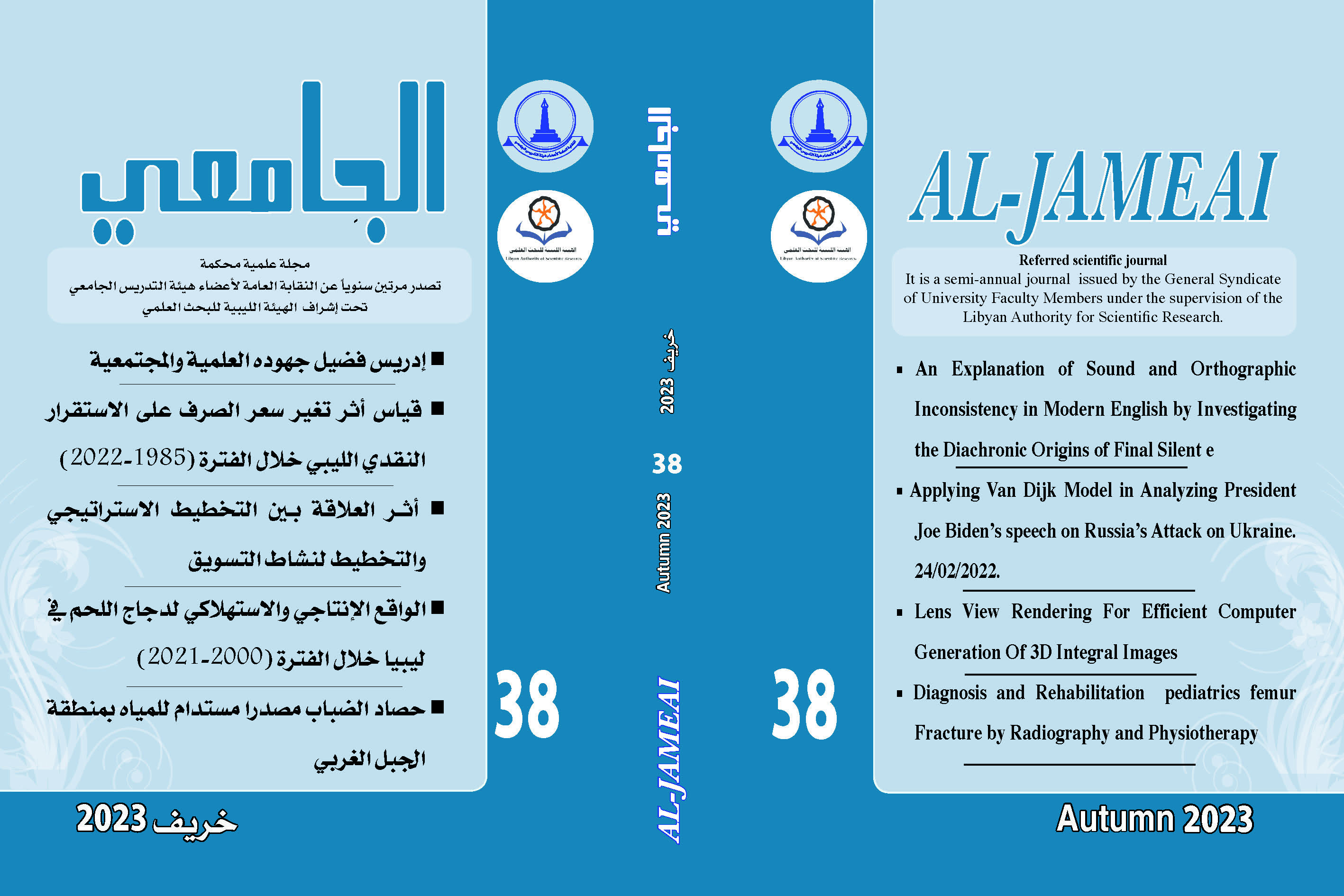التقدير القياسي لأهم العوامل المؤثرة علي نسبة الاكتفاء الذاتي للقمح في ليبيا
خلال الفترة (2000-2021)
Abstract
المستخلص:
يعتبر القمح من اكثر محاصيل الحبوب استهلاكاً في ليبيا , نظراً لاحتوائه علي قيمة غذائية عالية وكذلك لارتباطه بنمط الغذائي الليبي , لهذا هدف البحث الي دراسة أهم العوامل المؤثرة علي نسبة الاكتفاء الذاتي للقمح في ليبيا والتقدير القياسي لها خلال الفترة 2000- 2021 , وذلك باستخدام برنامج EVIEWS12لحساب المتوسطات , والنسب المئوية , و معدلات النمو السنوي لبعض المتغيرات الاقتصادية المؤثرة علي معدل الاكتفاء الذاتي للقمح , كذلك استخدام نموذج الانحدار البسيط و المتعدد في الصورتين الخطية وغير الخطية لتقدير العلاقات الدالية , والتقدير القياسي , وقد توصل البحث للعديد من النتائج تتمثل في أهم العوامل التي لها تأثير مباشر علي نسبة الاكتفاء الذاتي والتي تمثلت بالترتيب في عدد السكان بالمليون نسمة و كمية الانتاج المحلي وكمية الواردات بالآلف طن حيث ُ جاءت اشارات المعلمات المقدرة للمتغيرات المستقلة متفقة مع المنطق الاقتصادي , وأوضحت اشارة معلمة عدد السكان في ليبيا (POP) و كمية الواردات من القمح (IO) , ان زيادة عدد السكان وكمية الواردات من القمح بمقدار 10% سيؤدي الي انخفاض نسبة الاكتفاء الذاتي بمقدار20.4%, 0.01 % منهم علي التوالي , اما اشارة معلمة كمية الانتاج المحلي للقمح (P) فتوضح ان زيادة الانتاج المحلي من القمح بمقدار10% سيؤدي الي زيادة الاكتفاء الذاتي بنسبة 0.06%. وقد اوصي البحث بضرورة اتخاد كافة الاجراءات الهامة لتحقيق هدف الاكتفاء الذاتي من القمح بما يكفل تقليل الواردات منها , وذلك عن طريق رسم الخطط والبرامج التي من شأنها النهوض بالإنتاج المحلي للقمح وذلك عن طريق الاستغلال الأمثل لما هو متوفر من الموارد, و التوسع في المساحات المزروعة سنوياً, وادخال التكنولوجيا الزراعية المتطورة .
Abstract:
Wheat is one of the most consumed grain crops in Libya, Because of its high nutritional value as well as its association with Libya's food pattern, This is the objective of the research to study the most important factors affecting the self-sufficiency rate of wheat in Libya and its standard estimate during the period 2000-2021. Using EVIEWS12 to calculate averages, percentages, and annual growth rates for some economic variables affecting wheat self-sufficiency rate, The simple and multiple regression model is also used in both linear and non-linear images to estimate dual relationships. A standard estimate, the research has produced many findings: the most important factors that have a direct impact on the self-sufficiency ratio, in order, are the number of people per million, the quantity of domestic production and the amount of imports per thousand tons. The estimated parameters signals of independent variables are consistent with economic logic. (POP) and the quantity of imports of wheat (IO), an increase in the population and the quantity of imports of wheat by 10% will result in a decrease in the self-sufficiency rate by 20.4%, 0.01% of them respectively, while the indicator of the amount of domestic production of wheat (P) shows that increasing domestic wheat production by 10% will increase self-sufficiency by 0.06%. The research recommended that all important actions should be taken to achieve the goal of wheat self-sufficiency in order to ensure the reduction of imports from wheat by drawing up plans and programmes that would promote the local production of wheat by optimizing the availability of available resources, expanding the areas grown annually, and introducing advanced agricultural technology .
Downloads









